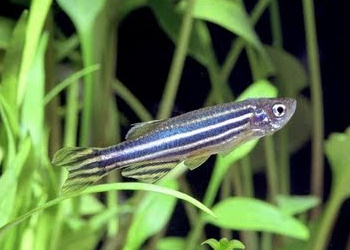Understanding
how the nervous system of animals recognizes salient stimuli in the
environment, selects and executes appropriate behavioral responses is one of
the fundamental questions in systems neuroscience. To facilitate the
neuroethological study of visually guided behavior in larval fish, Bianko et
al. (2011) developed virtual reality assays in which precisely controlled
visual cues can be presented to larvae whilst their behavior is automatically
monitored using machine vision algorithms. Freely swimming larval zebrafish, Danio rerio, responded to moving stimuli
in an evident size-dependent manner. They turned towards small moving spots
(1°) but reacted to larger spots (10°) with the high amplitude aversive turns. Bianco
et al. (2011) adapted their virtual reality assay to deliver artificial visual
cues to partially restrained larvae and found that small moving spots evoked
convergent eye movements with J-turns of the tail. According to their assumption,
eye convergence represents the predatory mode of behavior in larval fish and
serves to increase the region of binocular visual space to enable stereoscopic
targeting of prey.

Check basic
references to understand other aspects of the neuromotor grounds of the
behavioural responses to artificial and natural visual stimuli in the larval
zebrafish.
Basic References
Bianco I.H.,
Kampff A.R., Engert F. 2011. Prey capture behavior evoked by simple visual stimuli in larval zebrafish.
Frontiers in Systems Neuroscence 5, 1-13
Borla M.A., Palecek B., Budick S., O’Malley D.M. 2002. Prey capture by larval zebrafish:
evidence for fine axial motor control. Brain, Behavior & Evolution 60, 207-229
Budick S.A.,
O’Malley D.M. 2000. Locomotor
repertoire of the larval zebrafish: swimming, turning and prey capture. Journal of Experimental Biology 203,
2565-2579
...
Read more »




